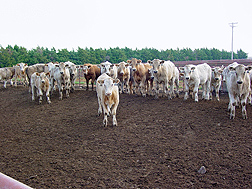The U.S. Food and Drug Administration issued today draft Guidance for Industry #229: Evaluating the Effectiveness of New Animal Drugs for the Reduction of Pathogenic Shiga Toxin-Producing E. coli (STEC) in Cattle. GFI #229 provides recommendations on study design and criteria drug manufacturers should use when evaluating the effectiveness of animal drugs intended to reduce STEC. The draft guidance addresses topics including:
study conduct;
animal welfare;
nutritional content of experimental diets;
the assessment of drug concentrations in experimental diets;
experimental parameters; and
substantial evidence of effectiveness.
The draft guidance also provides recommendations for acceptable indications, as well as study designs and analyses that sponsors should use to verify the effectiveness of drugs intended to reduce pathogenic STEC in cattle.
STEC is a foodborne pathogen found mostly in cattle, but can cause serious human illness if contracted. In the U.S., E. coli O157:H7 is the most common type of STEC associated with foodborne E. coli outbreaks, but other serotypes of STEC may also cause illness in people. Most foodborne E. coli infections can be prevented by thorough hand washing, cooking meats to the appropriate temperature, and preventing cross contamination in food preparation.
The FDA is accepting public comments on this draft guidance beginning on February 24, 2015. To submit your comments electronically to the docket, go to www.regulations.gov and type FDA-2015-D-0235 in the search box. Please note that the docket will not be open to accept comments until this date. The comment period will close 60 days after it publishes in the Federal Register. While comments are welcome at any time, you should submit them by the closing date for the FDA to consider your comments in drafting the final guidance.

